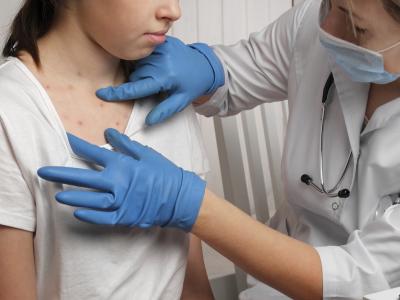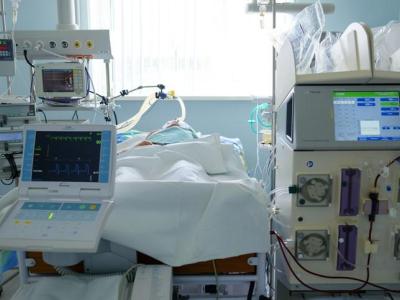Antibiotic stewardship is no longer in its infancy. Across the country, hospitals of all sizes have committed to using antibiotics appropriately and giving patients the right antibiotic, at the right dose, and the right time.
According to a 2017 survey from the Centers for Disease Control and Prevention, 76% of 4,900 US acute care hospitals now have an antibiotic stewardship program (ASP) that meets all seven of the agency's "core elements" for hospital ASPs—nearly doubling the number from 2014. And with new federal requirements mandating ASPs in all US hospitals and health systems, that number is likely to rise.
But while antibiotic stewardship is becoming the norm, questions about the practice remains. Do ASP professionals know how exactly to define appropriate antibiotic use for most conditions that warrant antibiotic therapy? Or what type of ASP interventions work best and are sustainable across different settings? How many resources need to be devoted to stewardship? And what's the best method of measuring the success of an ASP?
These are a few of the questions asked in a new white paper from the Society for Healthcare Epidemiology of America (SHEA) that calls for more research into the best ways to optimize the reach and effectiveness of ASPs.
The paper, written by a multidisciplinary group of antibiotic stewardship clinicians and researchers and published today in Infection Control and Hospital Epidemiology, argues that while ASPs are a necessary tool for addressing inappropriate antibiotic use, critical research gaps need to be addressed to maximize their impact.
Four research gaps
The paper lays out four broad categories in which more research is needed. The first category addresses the need to define appropriate antibiotic use. The paper calls for the development of evidence-based guidance for the diagnosis and treatment of infectious diseases that require antibiotic therapy, including pneumonia (community-acquired, healthcare-acquired, and ventilator- acquired pneumonia), asymptomatic bacteriuria and urinary tract infections, skin and soft-tissue infections, diabetic foot infections, and intra-abdominal infections.
While early attempts to assess appropriate antibiotic use for these conditions have used adherence to national guidelines as a measuring stick, the authors of the paper argue that guidelines don't always prioritize treatment approaches, often exclude clinically relevant populations (such as immunocompromised patients), and fail to address other areas of infection management. As a result, they write, questions remain about whether mild-to-moderate community-acquired pneumonia requires universal antibiotic coverage, or which patients with healthcare-acquired or ventilator-acquired pneumonia require broad-spectrum antibiotics to treat infections caused by methicillin-resistant Staphylococcus aureus or Pseudomonas aeruginosa.
The authors suggest some of these questions can be answered with randomized clinical trials and observational studies using scientifically rigorous approaches.
Then there's the issue, addressed in the second category, of defining which of the numerous ASP strategies used by hospitals are most effective in terms of patient outcomes, impacts on antibiotic resistance levels, and cost, which are sustainable, and what kind of resources are needed to ensure effectiveness.
The authors note, for example, that while evidence indicates that interventions such as prospective audit and feedback and peer comparison via personalized email reports have been shown to improve antibiotic prescribing in different settings, combining these could produce even better results. Similarly, use of computerized decision support (CDS) that provides clinicians with information at the point of prescribing could also improve antibiotic use, they suggest.
But in both cases, high-quality studies are needed to determine if these hypotheses are correct, and what kind of resources are need to implement these interventions. Can CDS-based interventions, for instance, work in small, rural hospitals that lack trained stewardship professionals?
In addition, the authors say more research is needed on interventions that target the social and emotional dynamics of antibiotic prescribing, such as the fear of the "worst-case scenario" or the desire to avoid conflict with a demanding patient—factors found to drive inappropriate prescribing.
"Antibiotic prescribing in inpatient settings is sensitive to the social dynamics within groups of clinicians, including hierarchy, professional power, and shared accountability," the authors write. "Research is needed to assess the feasibility and effectiveness of stewardship interventions that target social and emotional dynamics."
The third category is determining the best way to measure ASP effectiveness. While antibiotic utilization is the most tracked metric, standardized approaches are needed to create meaningful benchmarks, the authors say. Furthermore, reducing antibiotic use isn't the only goal of stewardship. Ultimately, hospitals need to know whether efforts to improve antibiotic use have led to better patient outcomes, reduced antibiotic resistance, fewer adverse events, and reductions in other unintended consequences.
"The need for valid and reliable metrics to assess the clinical impact of AS (antibiotic stewardship) efforts is critical to advancing the science of this discipline," the authors write. "Developing a core set of standardized clinical outcome variables for which stewardship studies can be appropriately designed and powered will drive research to identify the most effective AS interventions in diverse healthcare settings."
The fourth category identified in the paper is the need for advanced study designs and appropriate analytic methods to evaluate and improve stewardship interventions. The authors say developing new methods to assess the impact of stewardship on clinical outcomes will require additional funding.
"Robust assessments of AS interventions require more financial resources and investments in research infrastructure," they write.
See also:
Oct 30 Infect Control Hosp Epidemiol abstract























